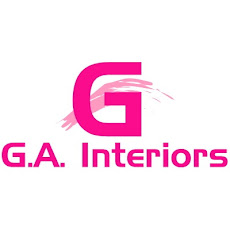Lighting is much more than choosing a lamp and plugging it in!
There are several factors we should firstly consider:
- Why is lighting required?
- Where is light required in the room?
- What style should I choose?
- How can I co-ordinate the lights from room to room?
- What safety features should I think about?
Let's look at each one in turn:
PURPOSE
Lighting can be broken down into the following categories:
- General lighting
- Task lighting
- Accent or Display lighting
- Safety lighting
General lighting gives an overall light in the room. It's required for general movement within the room and would include natural light and central pendant lights.
Task lighting is as its name implies, it's required for undertaking a task such as reading, knitting, playing games and completing homework.
Accent or Display lighting adds interest to a particular item or feature in the room. It may include a picture light or lighting within a display cabinet or on a shelf.
Safety lighting is as the name implies, it's required to provide safety such as with under-cupboard strip lighting in a kitchen to help see better when using sharp utensils.
When you start to think about lighting in a room, it's a good idea to make a list of all the activities that are going to be undertaken within the space and then you can assess what type of lighting will be required.
LIGHT LEVELS
Once you've decided what type of lighting is required you can assess the level or strength of lighting required.
For example, task lighting would need a strong light but general lighting may only require soft lighting. Rem,ember that you can alter lighting through the selected bulb and also through a dimmer switch.
When you assess light levels you should also look for any dark spots in a room or property. Which areas are gloomy and how can you best light them?
It's also imperative when selling a property to adequately light the front aspect so that potential buyers can clearly identify the property from the roadside and easily find the front door.
STYLE
Lighting products fall into the following categories:
- Central pendant light
- Wall light
- Table lamp
- Floor lamp
- Safety light
Once you've decided the purpose and light levels you're in a position to determine the most suitable style. For example, task lighting would be a strong light and could be accommodated within a desk table lamp. You then know that a socket is required for a desk lamp near to the desk.
There are so many lighting options around today that the selection is truly breathtaking.
Rather than looking at the selection as a whole and being in total awe or confusion, break down the options into appropriate material types. For example, a country cottage would be more suited to natural wood and fabric lamp shades whereas a contemporary pad would be more suited to chrome and crystal.
This is also a top tip when co-ordinating lighting within a total property - focus on matching material and shapes. For example: a contemporary property may feature lighting that focuses on square crystal drops.
SAFETY FEATURES
Quite often we forget or dismiss the boring safety features of lighting but it's so important for a designer home as well as keeping you safe and sound.
Safety lighting ensure that our property and our lifestyle come together in a workable solution that also looks fabulous.
Most of us are already aware of safety lighting, for example: specialist bathroom sealed units because mixing electricity with water is not the safest of activities.
Safety includes many elements around the home and in any corporate environment, for example: lighting staircases to prevent falls and slippage, lighting front doors to make it easier and quicker when searching for keys, highlighting Fire Exits to make a quick getaway, and providing additional lighting when chopping vegetables in the kitchen.
Once you've assess all of these aspects, from the purpose to the light levels and from the style to the safety features, you should have a cohesive and co-ordinated lighting design that not only showcases the property's features but is also a workable and enjoyable space to be in.
Of course, we're always here to help out if you get a little stuck or overwhelmed.
Call us today to see how we can help you.
Gwendoline
Creative Director
GA Interiors
Tel: 07841 519802
E-Mail: gwendoline@ga-interiors.co.uk
Website: http://www.ga-interiors.co.uk/
Facebook: www.facebook.com/gainteriors
LinkedIn: www.linkedin.com/in/gainteriors
Twitter: www.twitter.com/ga_interiors
Monday, 1 March 2010
Subscribe to:
Post Comments (Atom)



No comments:
Post a Comment